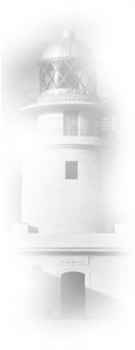RESEARCH > Nautical charts
We know about the importance of maps and charts used by sailors in order to slice through the Mediterranean waters. It was essential for them to know about the most important ports, the largest towns and cities to stock up on different types of goods; as well as the most prominent bays and most dangerous features to know where to anchor and shelter during bad weather conditions.
There are several maps that present entries for the Cavalleria Cape and the port of Sanitja, by means of place-names which seem to be similar to the old name that was given to the port in Classical times: Sanisera. Nowadays, these place-names serve as clues for the archaeologist and the historian who look for the ruins of a Roman city which dates back 2000 years. Specifically, there is a map of Hispania design by Abraham Ortelius in 1590 in which the Roman city of Sanisera is located in the northern part of Menorca.
It is very interesting to note that “Sanisera” is one of the most frequent place names that appear on maps depicting the Balearic Islands and, in general terms, cartographical works showing the most important ports of Menorca are prone to include it too, along with Maó, Ciutadella and Fornells. All this confirms the importance of Sanitja as a port of transit and safe anchorage in the Mediterranean.
This information determines that during the Medieval and Muslim period, the port of Sanitja must have continued to be an important point of anchorage.
| Chart author |
Year |
Toponimical |
Pere Martell |
1228 |
Sereyna |
Carta Pisana |
1270 |
Sendia |
Il Compasso da Navigare |
1296 |
Porto Senello |
Giovanni de Cavignano |
1300 |
Seneua |
Anónimo de Pisa |
1300 |
Senoly |
Petrus Vesconte |
1313 |
Soneli |
Petrus Vesconte |
1318 |
Senelli y Senoli |
Angelino Dulcert |
1339 |
Seneli |
Laurenciano Gaddiano |
1351 |
Seneli |
Abraham i Jafuda Cresques |
1375 |
Sanitja |
Charta Navigatoria,
Pinelli-Walckenaer |
1384 |
Senige |
Guillem Soler |
1385 |
Senige |
Anónimo de l’Estense |
s. XV |
Sonia |
Macià de Viladestés |
1413 |
Seniga |
Arxiu de la Corona d’Aragó |
1420 |
Ceniya |
Battista Becharius |
1426 |
Seniga |
Jachobus de Giroldis |
1426 |
Seniglles |
Andrea Bianco |
1436 |
Senigta o Senigla |
Gabriel de Vallseca |
1439 |
Seniia |
Italianischen, portolane |
Mediados s. XV |
Senitja |
Petrus Rossell |
1447 |
Sema |
Pere Rossell |
1462 |
Senia |
Gratiosus Benincasa |
1468 |
Cenegta |
Mn. Ignasi M. Colomer |
¿1480? |
Senoli |
Arnau Domenech |
1486 |
Senitja |
Anónimo catalán |
1487 |
Seniga |
Jaume Bertran |
1489 |
Seniga |
Nicolás Donis el Germánico |
1495 |
Seneli |
Jehuda Ben Zara |
1497 |
Sinia |
Conte Freducci |
1497 |
...ega |
Colección S. Magüerza |
s. XVI |
Cenega |
| Charta Navigatoria |
c. 1500 |
Senege o Cenega |
Vesconte Maggiolo |
1512 |
Zenaga |
Jacobus Russus |
1535 |
Séneca |
Bartolomé Olives |
1538 |
Sauia |
Pierre Descelliers |
1526 |
Sonige |
Giorgio Calapoda |
1552 |
Cenegla |
Domingo Olives |
1568 |
Ceniose |
Jaume Olives |
1571 |
Saniye |
Bartolomé Olives |
1584 |
Seniya |
Abraham Ortelius |
1586 |
Sanisera |
Joan Martines |
1587 |
Cenegla |
Jean de la Haye |
s. XVII |
Zenega |
Portulano anónimo |
c. 1600 |
Ceneg |
Pierre Berts |
1618 |
Zenega |
Anónimo francés |
1645? |
Ianisera |
Sansón d’Abbvevile |
1653 |
Zenhaga |
John o Jan Jansson |
1657 |
Sanisera |
|



